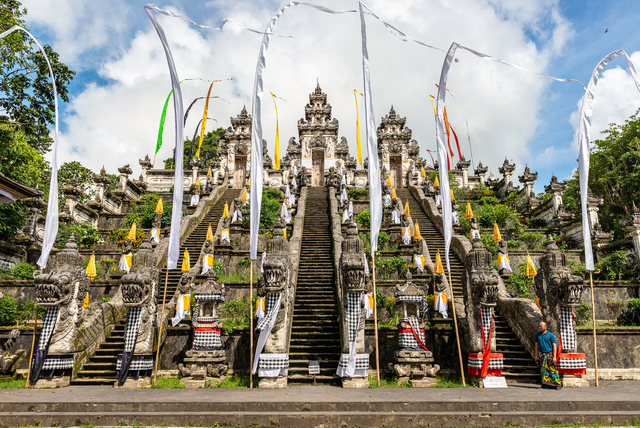
On the island of Bali, there are more temples than houses. According to some estimates, there are at least 50,000 temples.
At first, it's hard to believe, but temples in Bali are literally everywhere.
Not only large and monumental ones, but also village temples, water temples, mountain temples, and even household temples.
The term "pura" comes from the Sanskrit word (-pur, -puri, -pura, -puram, -pore), meaning "city," "fortified city," "elevated city," or "palace." It came during the Indianization of Southeast Asia and the spread of Hinduism. In the Balinese language, the term "pura" came to refer to a religious temple complex, while "puri" refers to a palace, the residence of kings and nobles.
Hinduism is based on the idea of a unified cosmic order that extends to every aspect of the Universe. This universal organizing principle is called "dharma."
The central concept in this system revolves around the idea of the tripartite division of the Universe (tri loka), comprising the underworld of bhur (bhur), inhabited by demons and evil spirits; the realm of humans in buwah; and the heavens of swah, where gods and deified ancestors reside.
The Balinese temple, or "pura," is closely connected to the number three. It is divided into three courtyards or spaces. Within each temple, there are places of worship for the three prominent deities of Hinduism: Brahma, Vishnu, and Shiva. And in every Balinese village, there exists a "three temple system."
Each Balinese village has its Pura Desa temple, Pura Puseh temple, and Pura Dalem temple.
The Pura Desa temple is dedicated to local spirits and the god Brahma. It is typically situated in the center of the village.
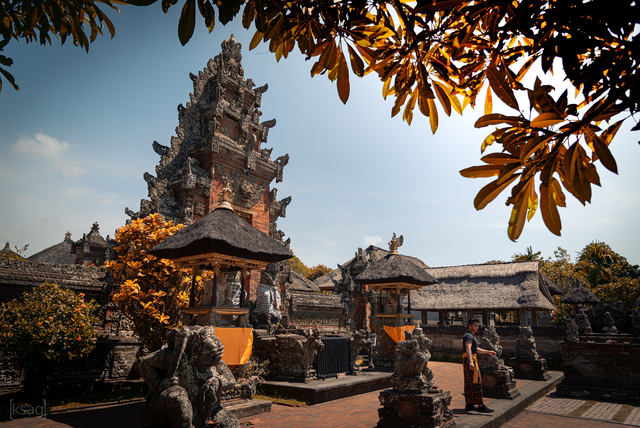
Pura Puseh Temple is dedicated to the god Vishnu and the village founders. It is usually located on the side of the village closer to Mount Agung.
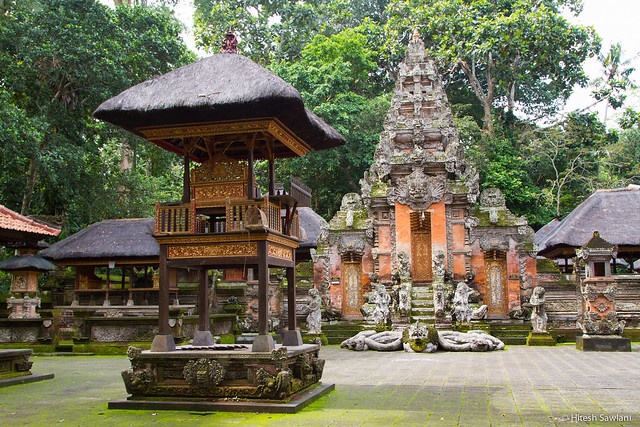
Pura Dalem Temple is referred to as the "temple of the dead" and is typically located on the side of the village facing the sea. Pura Dalem temples are usually dedicated to Shiva or related deities like Kali, Durga, or even Rangda. However, the theme of death is not entirely gloomy, as these destructive forces are considered necessary for dissolving impurities, evil beings, and earthly illusions.
The placement of Pura Desa and Pura Dalem temples can be explained by the fact that in Bali, mountains are considered the most sacred part of the island, while the sea is seen as a place of impurity and evil.
Pura Puseh, Pura Desa, and Pura Dalem temples are a minimum requirement for any village in Bali. There are also other types of temples.
Pura Kahyangan Jagad (Pura Kahyangan Jagad)
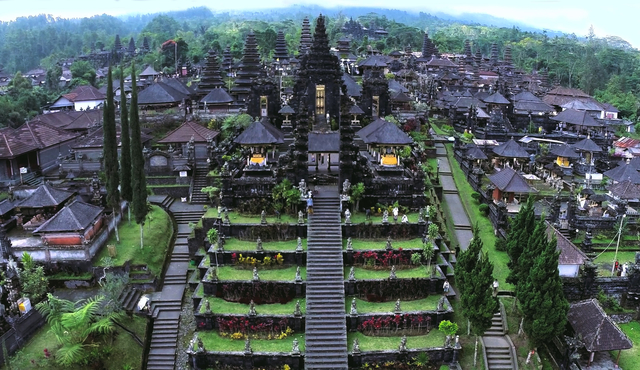
This category includes temples that are situated in the mountainous part of the island, on the slopes of mountains or volcanoes. Mountains are considered sacred magical realms with spirits and the abode of gods. The most important Kahyangan Temple in Bali is the Pura Besakih complex located on the slopes of Mount Agung.
Pura Tirta (Pura Tirtha)
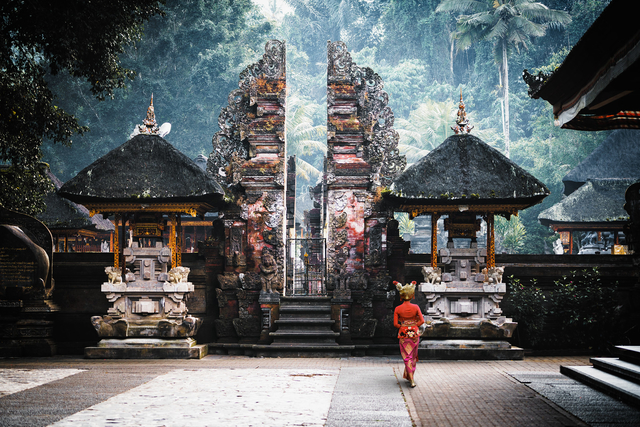
"Water temples" serve the purpose of water management as part of the Subak irrigation system. Priests in these temples have the authority to manage the distribution of water among the rice fields in the villages surrounding the temple. Some Tirta temples are known for their sacred water and the presence of a holy bathing pool for cleansing rituals. A typical example of such a temple is Tirta Empul Temple (Pura Tirta Empul).
Other water temples are built on lakes, such as Pura Ulun Danu Bratan.
Pura Prajapati
This type of temple is created for the worship of Prajapati ("lord of creatures") or cosmic power. Typically, this temple is dedicated to Shiva in his form as Prajapati.
Pura Segarae
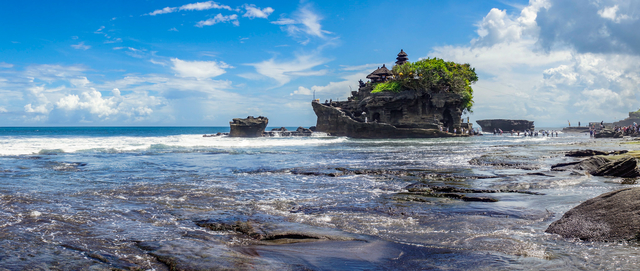
"Sea temples" are built by the sea to appease the sea gods. They are used during Melasti rituals. One example of this type of temple is Tanah Lot Temple and Uluwatu Temple.
In a Balinese village, there are not only temples for each deity of the Trimurti, or the divine Hindu trinity. The three main gods also have their place in each individual temple. This might be represented as three tall towers with thatched roofs. In this case, the tallest one is likely to represent Shiva.
The divine trinity is also sometimes represented by color: red symbolizes Brahma, black - Vishnu, and white - Shiva.
The number three also plays an important role in the overall layout of each individual temple in Bali. Upon entering the temple, you will first find yourself in the Jaba Pisan, an intermediate space that acts as a bridge between the sacred space and the outside world.
The next courtyard is the Jaba Tengah, where during festivals, performances of the gamelan orchestra can take place.
Finally, the most sacred and innermost area of the temple is the Jero or Jeroan. This is where the main tower is located, along with the most important relics the temple possesses.
The Balinese temple complex serves as a metaphor for the Hindu cosmos - three courtyards mirroring the tripartite nature of the Universe, with each ascending level representing a higher state of purity and holiness.
Individual sanctuaries or towers within the temple can also be divided into three parts, representing the "three worlds": the underworld, the realm of humans, and the heavens.
Among the tens of thousands of temples in Bali, there are nine specific temples considered the most important. Balinese believe that these special temples help balance the forces of the entire island.
When visiting a temple, you will encounter various intricate gates, shrines, or other interesting structures. Among them, there will be many variations.
For example, some temples have special shrines dedicated to specific deities beyond the Trimurti. Additionally, you might notice several covered pavilions within the temple grounds. These may serve for gamelan performances or village gatherings.
All Balinese temples share one common trait: they are all open to the sky. Balinese explain this by saying that the gods, invoked during special ceremonies, can descend from the heavens into the temple and then return home.
Candi Bentar (Split Gate)
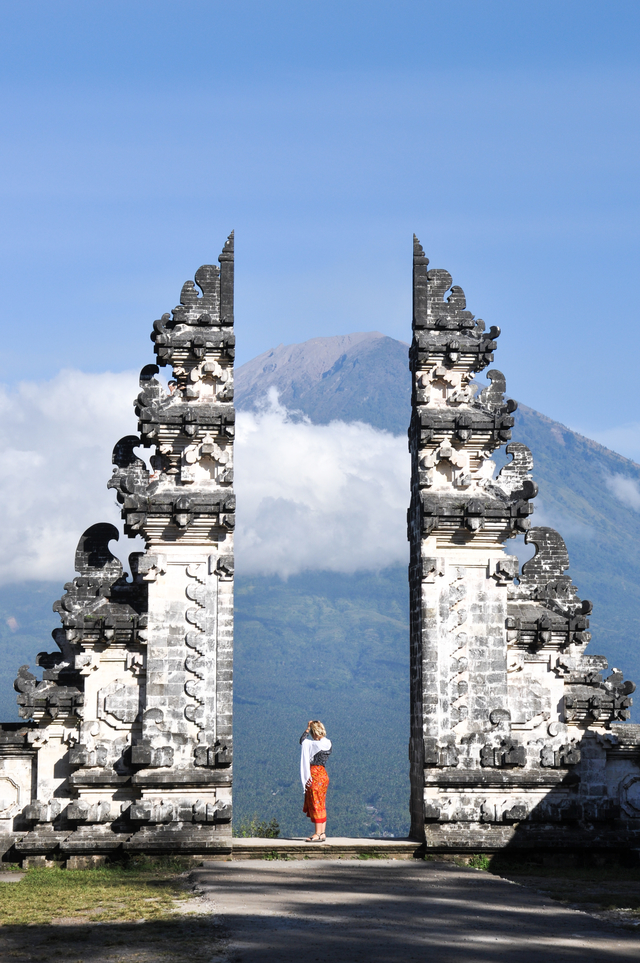
As you approach the temple, the first thing you'll notice is the candi bentar, or split gates. These gates resemble the sacred Mount Meru, which was split into two equal parts.
Meru is a mythological mountain where the gods reside. It appears not only in Hindu mythology but also in Jain and Buddhist stories.
Both sides of the gate represent the Balinese concept of duality and the importance of maintaining a balance between dark and light forces.
Paduraksa
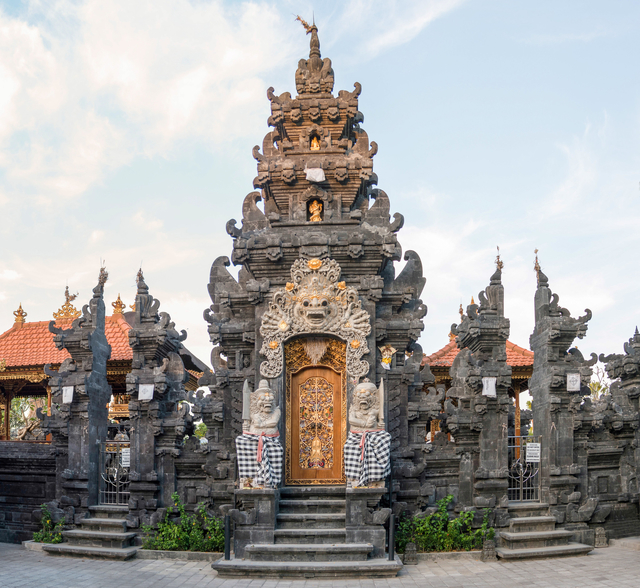
Most temples have inner gates known as paduraksa or kori agung. These gates separate different areas within the temple, such as the jaba pisan from the jaba tengah.
Unlike candi bentar, these gates are not split into two parts. You'll likely find the face of Bhoma, the Balinese forest deity, on them. While the creature may appear fierce, it acts as a protector, warding off evil spirits from entering the holier parts of the temple.
Meru
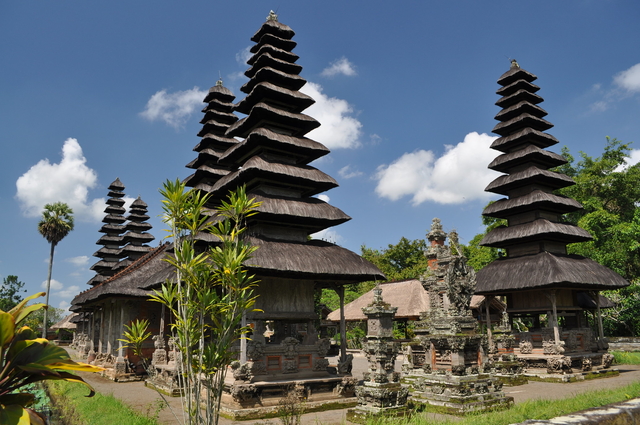
In addition to the temple gates, the most distinctive feature of Balinese temples is their multi-tiered pagodas with varying numbers of thatched roofs. They are located in the most sacred and inner part of the temple. These towers also symbolize Mount Meru.
Different towers may be dedicated to different gods, and sometimes even to specific individuals or local mountains. Meru towers have 3, 5, 7, 9, or 11 tiers. This sequence of numbers is considered sacred not only in Bali but also in cultures worldwide. It is said that the significance of a Balinese temple can be more or less defined by the height of its tallest meru.
Kulkul
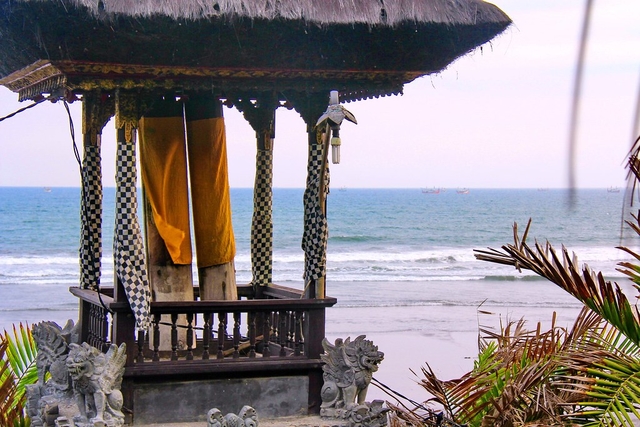
Kulkul is a tower with a bell. It is used to summon villagers for meetings or announce a death. During special ceremonies, when it is believed that gods or spirits descend upon the temple complex, the kulkul announces the deity's arrival.
The bell itself hangs from the ceiling of the thatched roof. Typically, it is a hollow wooden cylinder with a slit in the middle, which is struck by a special mallet.
Padmasana
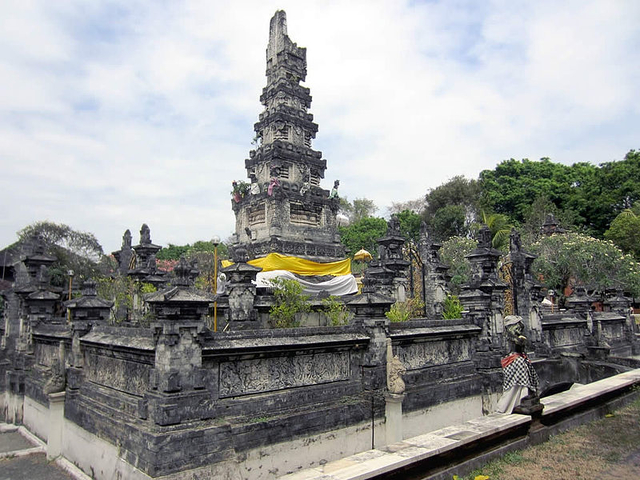
Balinese Hinduism is a monotheistic religion. The supreme god of the Balinese is known as Sang Hyang Widhi Wasa. Balinese people use what is called a padmasana or an empty throne for the god, on which, they say, Sang Hyang Widhi Wasa resides.
The padmasana is unique to Bali and you won't find it in other Hindu countries, such as India, for example. It is said to have been created by the 16th-century priest Dang Hyang Nirartha, who also influenced many other aspects of what constitutes Balinese Hinduism today.
You can add one right now!